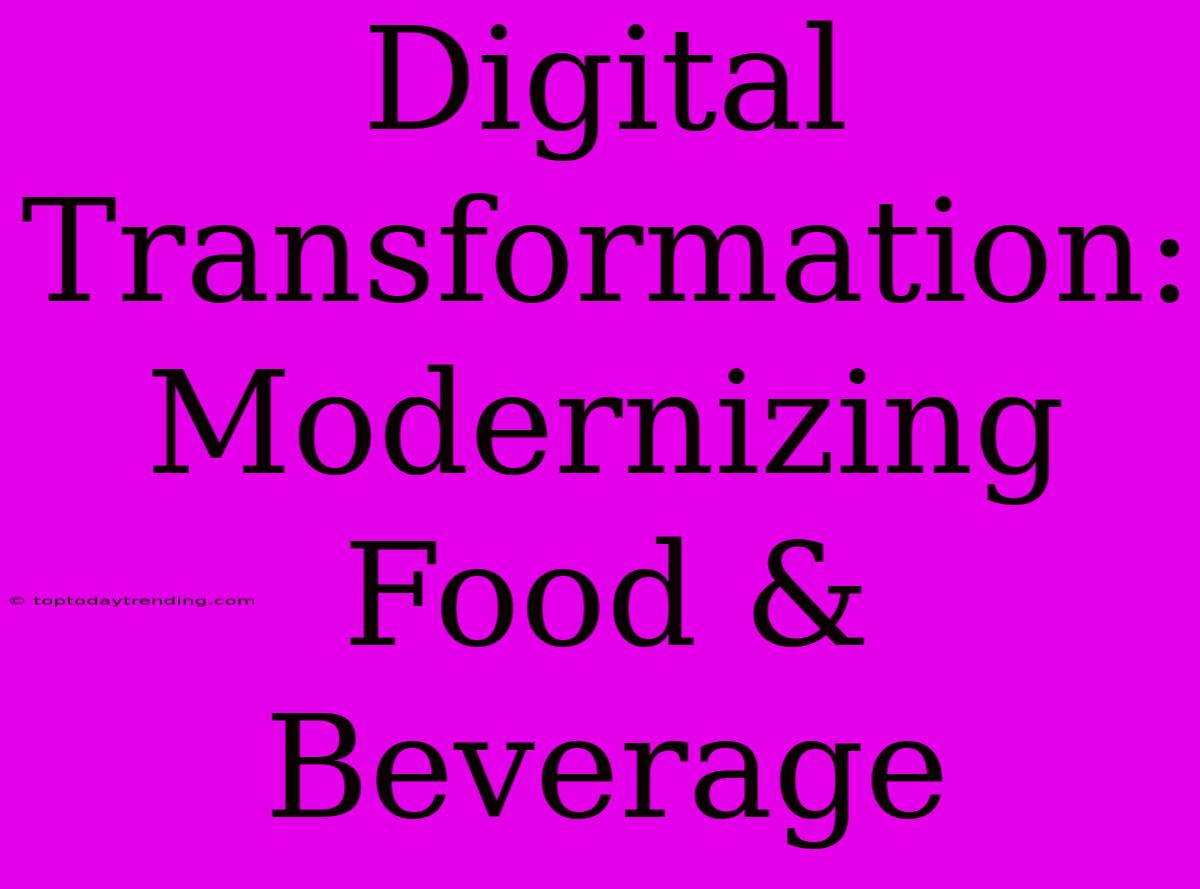Digital Transformation: Modernizing Food & Beverage
The food and beverage industry is undergoing a massive transformation, driven by digital innovation and changing consumer expectations. Digital transformation is no longer a choice but a necessity for businesses to thrive in this dynamic market. This article explores the key aspects of digital transformation in the F&B sector and how companies can leverage it to modernize their operations and achieve sustainable growth.
The Rise of Digital in F&B
The F&B industry is witnessing a rapid surge in digital adoption across its value chain. From production to retail and customer experience, digital technologies are reshaping the way businesses operate. Here are some key trends driving this transformation:
1. Evolving Consumer Preferences: Consumers are increasingly demanding personalized experiences, transparency, and convenient access to information. 2. Technological Advancements: Emerging technologies like AI, IoT, blockchain, and cloud computing offer immense potential for improving efficiency, safety, and sustainability in F&B operations. 3. Competitive Pressure: Digital transformation is no longer a luxury but a necessity for staying ahead of the curve and competing effectively in the dynamic F&B market.
Key Areas of Digital Transformation in F&B
Digital transformation can impact various aspects of the F&B industry. Here are some key areas where businesses can leverage digital tools and technologies:
1. Supply Chain Management:
- Real-time Tracking: Digital tools like GPS tracking and RFID technology provide real-time visibility into the movement of goods, enabling better inventory management and efficient supply chain operations.
- Blockchain Integration: Blockchain technology can enhance transparency and traceability throughout the supply chain, ensuring food safety and provenance.
- Predictive Analytics: Data analytics can predict demand patterns and optimize resource allocation, reducing waste and improving efficiency.
2. Production and Manufacturing:
- Smart Factories: Integrating sensors and automation in manufacturing facilities allows for real-time monitoring, predictive maintenance, and improved production efficiency.
- Process Optimization: Leveraging data and analytics can optimize production processes, minimize downtime, and ensure product consistency.
- Food Safety and Quality Control: Digital tools can monitor and manage food safety parameters throughout the production process, reducing the risk of contamination and ensuring product quality.
3. Marketing and Sales:
- Personalized Marketing: Leveraging data analytics and customer insights, businesses can personalize marketing campaigns and deliver targeted promotions.
- Digital Channels: Utilizing online platforms like e-commerce websites and social media for direct sales, marketing, and customer engagement.
- Data-driven Insights: Analysing consumer data and market trends helps businesses to understand customer preferences and develop effective marketing strategies.
4. Customer Experience:
- Omnichannel Integration: Creating a seamless customer experience across online and offline channels, including e-commerce, mobile apps, and physical stores.
- Personalized Recommendations: Leveraging AI-powered recommendation engines to offer personalized product suggestions and enhance the customer experience.
- Interactive Platforms: Using augmented reality and virtual reality for engaging customer experiences, allowing them to virtually explore products or recipes.
Benefits of Digital Transformation in F&B
Digital transformation offers a wide range of benefits for F&B companies, including:
- Increased Efficiency and Productivity: Automating processes, optimizing resources, and improving operational efficiency.
- Enhanced Customer Experience: Delivering personalized experiences, convenient access to information, and a seamless omnichannel experience.
- Improved Food Safety and Quality: Ensuring traceability, compliance, and adherence to food safety regulations.
- Reduced Costs: Minimizing waste, improving resource allocation, and optimizing operational processes.
- Increased Revenue and Market Share: Leveraging data-driven insights to make informed business decisions and stay ahead of the competition.
Conclusion
Digital transformation is a powerful force that is reshaping the F&B industry. Businesses that embrace digital innovation and leverage its potential can gain a competitive edge, enhance customer experience, and drive sustainable growth. By embracing new technologies and adopting a data-driven approach, F&B companies can navigate the changing market landscape and thrive in the digital age.

